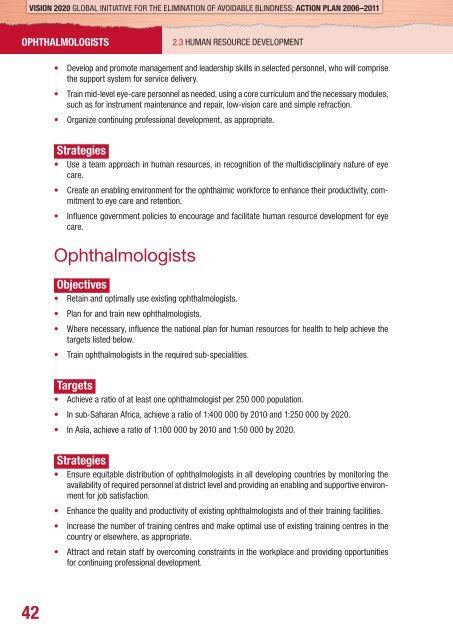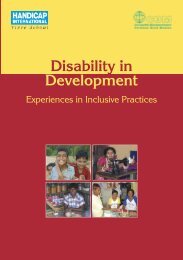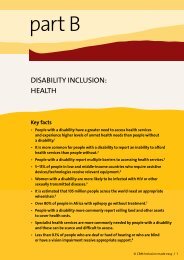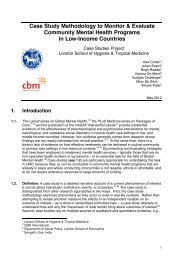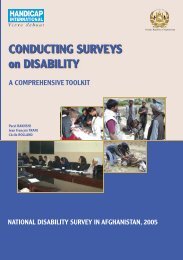Vision 2020 - World Health Organization
Vision 2020 - World Health Organization
Vision 2020 - World Health Organization
You also want an ePaper? Increase the reach of your titles
YUMPU automatically turns print PDFs into web optimized ePapers that Google loves.
VISION <strong>2020</strong> GLOBAL INITIATIVE FOR THE ELIMINATION OF AVOIDABLE BLINDNESS: ACTION PLAN 2006–2011<br />
OPHTHALMOLOGISTS<br />
2.3 HUMAN RESOURCE DEVELOPMENT<br />
• Develop and promote management and leadership skills in selected personnel, who will comprise<br />
the support system for service delivery.<br />
• Train mid-level eye-care personnel as needed, using a core curriculum and the necessary modules,<br />
such as for instrument maintenance and repair, low-vision care and simple refraction.<br />
• Organize continuing professional development, as appropriate.<br />
Strategies<br />
• Use a team approach in human resources, in recognition of the multidisciplinary nature of eye<br />
care.<br />
• Create an enabling environment for the ophthalmic workforce to enhance their productivity, commitment<br />
to eye care and retention.<br />
• Infl uence government policies to encourage and facilitate human resource development for eye<br />
care.<br />
Ophthalmologists<br />
Objectives<br />
• Retain and optimally use existing ophthalmologists.<br />
• Plan for and train new ophthalmologists.<br />
• Where necessary, infl uence the national plan for human resources for health to help achieve the<br />
targets listed below.<br />
• Train ophthalmologists in the required sub-specialities.<br />
Targets<br />
• Achieve a ratio of at least one ophthalmologist per 250 000 population.<br />
• In sub-Saharan Africa, achieve a ratio of 1:400 000 by 2010 and 1:250 000 by <strong>2020</strong>.<br />
• In Asia, achieve a ratio of 1:100 000 by 2010 and 1:50 000 by <strong>2020</strong>.<br />
Strategies<br />
• Ensure equitable distribution of ophthalmologists in all developing countries by monitoring the<br />
availability of required personnel at district level and providing an enabling and supportive environment<br />
for job satisfaction.<br />
• Enhance the quality and productivity of existing ophthalmologists and of their training facilities.<br />
• Increase the number of training centres and make optimal use of existing training centres in the<br />
country or elsewhere, as appropriate.<br />
• Attract and retain staff by overcoming constraints in the workplace and providing opportunities<br />
for continuing professional development.<br />
42


